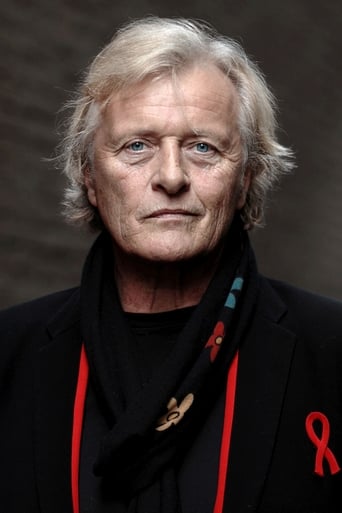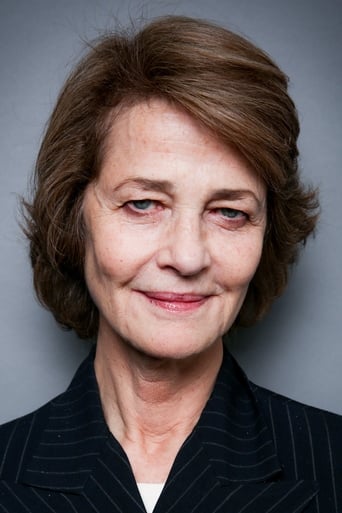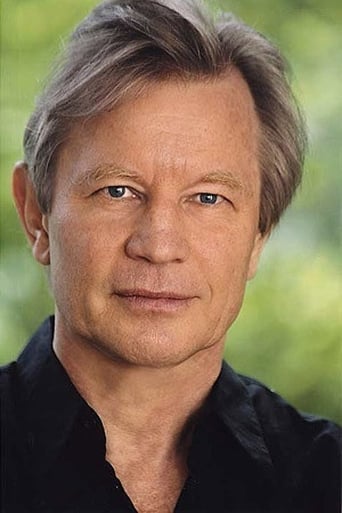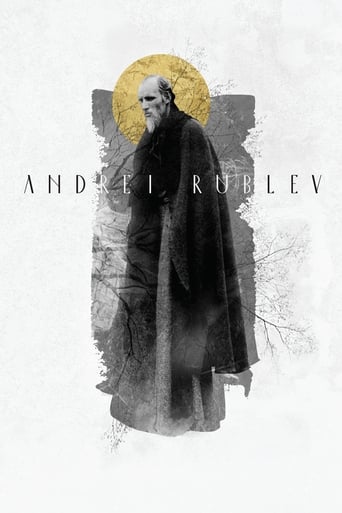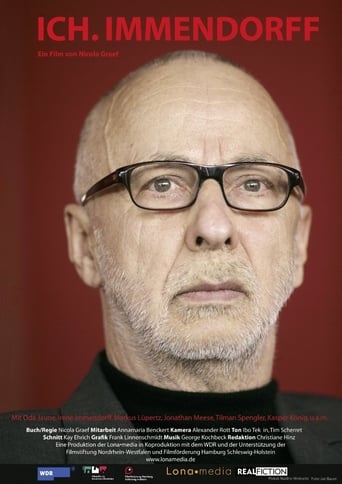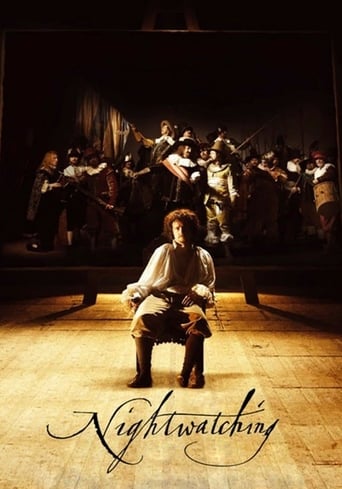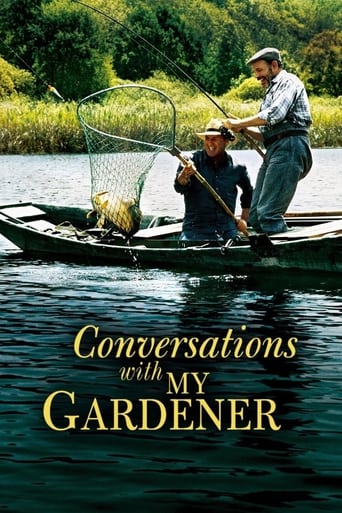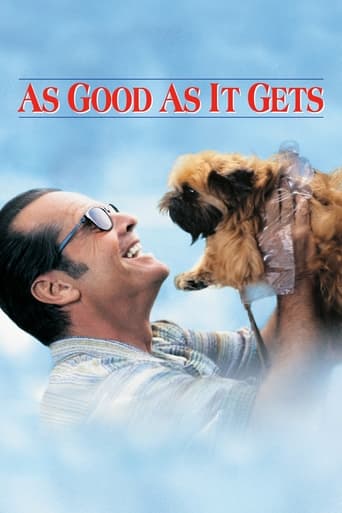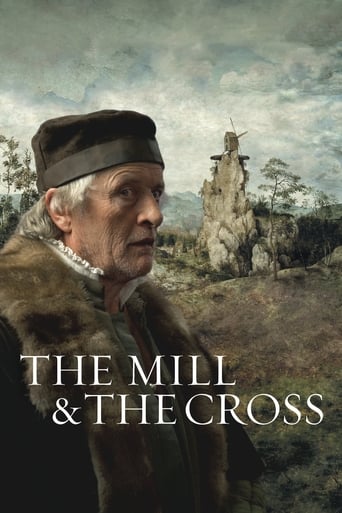
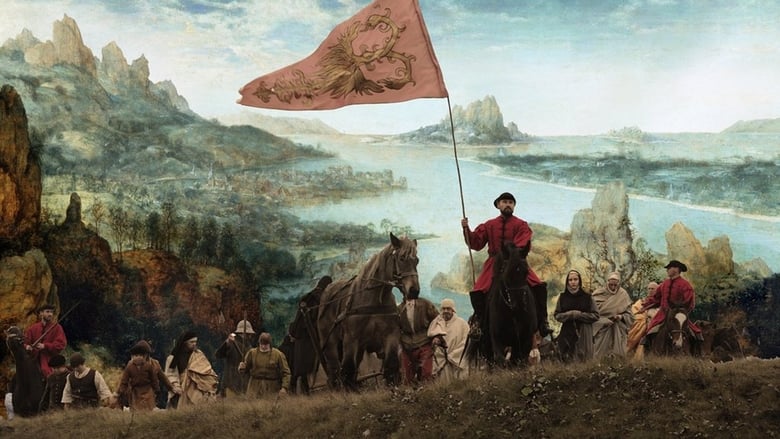
The Mill and the Cross (2011)
What would it be like to step inside a great work of art, have it come alive around you, and even observe the artist as he sketches the very reality you are experiencing? From Lech Majewski, one of Poland's most acclaimed filmmakers, The Mill and the Cross is a cinematic re-staging of Pieter Bruegel's masterpiece "Procession to Calvary," presented alongside the story of its creation.
Watch Trailer
Cast
Similar titles

Reviews
People are voting emotionally.
Absolutely the worst movie.
If the ambition is to provide two hours of instantly forgettable, popcorn-munching escapism, it succeeds.
One of the worst ways to make a cult movie is to set out to make a cult movie.
The Mill and the Cross certainly is a visual spectacle. With its very elaborate scenery and the painstaking efforts that went into the recreation of the painting, it's a technical masterpiece.Sadly, that's all that can be said in favor of the film.The storyline, if there really is any, jumps around from scene to scene in a seemingly random manner. None of the characters really interact and the acting is more like posing for a painting than acting. That might have been the goal, but it doesn't work here. In a sense, it's really not a movie but it rather has the style of a dramatized documentary.But it isn't a documentary either. At no time was any care given to real historical realism. In the film a reference is made to the city of Antwerp, but the city you can visit today (and please do, I'll give you a tour) looks more historically representative of the era than the film. I read and heard that enormous care was given to elements like the choice of the right kind of materials for the clothing. That may be true. But it brings nothing to the film as an experience, nor is it informative in any way. I read reviews where the reality with which the way of life in 16th century Flanders was depicted is greatly applauded. They are misguided. None of the building style, interiors, music or daily customs depicted are found anywhere in 16th century Flanders. They look like 13th century Poland. Because a lot of it was shot there. The landscape may resemble that of the painting, but clashes with reality. You might argue that it was the film maker's intent to closely resemble this highly symbolic painting. And I would agree. But he does this with great superficiality. It would have been much more interesting to show and contrast 16th century reality with the symbolism in the painting. But the director seems unable or unwilling to make the distinction. And thus we are left with a succession of 'tableaux' that visually resemble what's on the painting, with no reference to reality, then or now.You might argue that the director put in a lot of symbolism, some of his own. But the way the director tries to cram every pixel (the film was recorded digitally) with symbolism seems random too: a bit like a poet who believes his job is done when his sentences rhyme in a pleasing way, never mind the content. Sometimes he even attempts to be critical or sarcastic. Watching the scenes near the end where people are dancing and singing is downright painful. But there is no message in this. No-one cares? Life goes on? Life is hard and then you die? One person might call it an ode to the resilience of the ordinary people, but it might also be a protest against the callousness of the masses. The film takes no position.The director seems to know exactly what certain markets expect in terms of 'historical Europe' but seems to have no interest in the history and culture itself.If you are interested in a better film where symbolism, tempo, acting and story have a meaning, then I refer you to a real masterpiece about art, oppression and persecution: Andrei Rublev by the Russian master Andrei Tarkovski.
The Mill and the Cross (2011)Maybe I anticipated this for too long, hearing about its production, and teaching in an Art History department myself. The result is both astonishing and boring as heck. I know, there is a kind of absorption that happens through silence and slow appreciation. And there is even the astonishment of looking without really thinking, or feeling, for the narrative or the characters.This is, for sure, a visually wonderful movie. The way it works out the scenery and milieu of a period based on a single painting is brilliant and ambitious. The mise-en-scene might in fact be the only and singular point of it all. So on that level, eleven stars. Terrific. Mind-blowing.But that exercise in naturalistic re-creation, in enlivening a masterpiece on canvas by Bruegel from 1564, is not, to me, enough. You will know after ten minutes whether to continue. I have heard of people being just spellbound by it all, so that hopefully would be your feeling. I tried to make the characters have meaning on some level, either in their interactions, or in their actions alone, or through what they did to the world around them. Much of what happens feels more medieval than Renaissance, to me, but I'm sure that was researched thoroughly. (Bruegel was painting at a time when the Renaissance from Italy had made its way thoroughly north to the lowland countries and beyond.)It is fun (and indicative of the seriousness here) that both Michael York and Charlotte Rampling took part, late in their careers. That was one of the draws, for sure. But don't expect revelations there, either. Expect in fact only what the director, Lech Majewski, intended—a film version of the painting, set in its larger context but always based on and drawing from this one admittedly fantastic painting. Which might be your starting point, before launching into this one and half hour homage.
Set in Flanders during the 16th century, It is inspired by Peter Bruegel the Elder's 1564 painting The Procession to Calvary. The drama depicts Breugel's creative process conceiving and rendering the painting while life goes on around him: the gentle humour in the pastoral activities of the peasants including Breugel's own family, along with the arbitrary and horrible crucifixion of alleged Protestants by the red-tuniced Spanish Inquisition militia sent from the Vatican.If you're looking for an interesting narrative, action, character development, witty dialogue, or any dialogue at all, you're out of luck. The film is in English, but the amount of melodramatic mutterings from the only 3 English speakers would barely fill a page (all of the rest of the actors are Polish). This film dies on a small screen. If on the other hand, you're able to watch it on the largest possible screen in HD, you're in for a rare treat. The narrative is not what it's about, it's almost entirely about the remarkable imagery.Bruegel was inspired by the work of Hieronymus Bosch, both in his depiction of religious events and his style of rendering. Like Bosch, Bruegel depicted many scenes of human activity within one painting (art as a narrative medium for the illiterate). In The Procession to Calvary, Christ carrying the cross is depicted small in scale, at the centre of the composition, surrounded by many other apparently unrelated groupings. The whole scene is dominated by a mill in the background sitting precariously on an impossible rock perch. Bruegel seems to have been working in the period before the formal rules of perspective entered the visual language of painters. His figures do shrink in size from foreground to background, but the terrain they occupy appears parallel or flat to the picture plane.This quality seems to make it ideal for the director's whimsical depiction of the painting taking shape in the artist's mind: groupings of real figures, all apparently shot in isolation, animate the entire surface of the painting, waiting to be frozen in time by the Bruegel's brush. Seeing the painting briefly in this manner is one of the most charming moments of cinematic art in recent memory.The director doesn't stop there in his use of a Bruegelesque approach to a visual medium Bruegel could't have imagined. There are numerous scenes where the camera gazes steadily on elaborately staged action in the distant background while something else transpires in close up. Both parts are in sharp focus. Trying to achieve this in-camera would present the cinematographer with an impossible depth of field situation. I expect a lot of scenes were carefully staged in this way, to be digitally knitted together in post-production. In every scene the colours and textures are a visual feast and the lighting looks deceptively natural. The costumes are stunning and the production design like a painting by Bruegel.As for the dialogue: this film might have been better without any; maybe a bit of voice-over at best. Rutger Hauer's craggy features make him entertaining enough to watch as Bruegel. He needn't have opened his mouth. Michael York as Bruegel's patron Nicolaes Jonghelinck just looks old and Charlotte Rampling as Mary delivers her standard serenely sad gazes, but is otherwise forgettable.
I found this film to inspire the same contemplative mood and heightened awareness of similar films that build power without reliance on lots of dialogue, music or usual cinematic cues. If you appreciated "Into Great Silence" or "Vision" or "The Tree of Life" or even "2001" you will appreciate the poetic quality of this film. It is important for us to slow down occasionally and allow some films to affect us without the necessity of being slammed over the head with noise and speed and highly charged emotions. After all, for a film placed in its time, that is a more realistic portrayal of life during those centuries. This film illuminates the artistic process and aims of the artist. We are fortunate that the makers of this film dared to create this unique journey into a canvas of one of the world's great artists.
